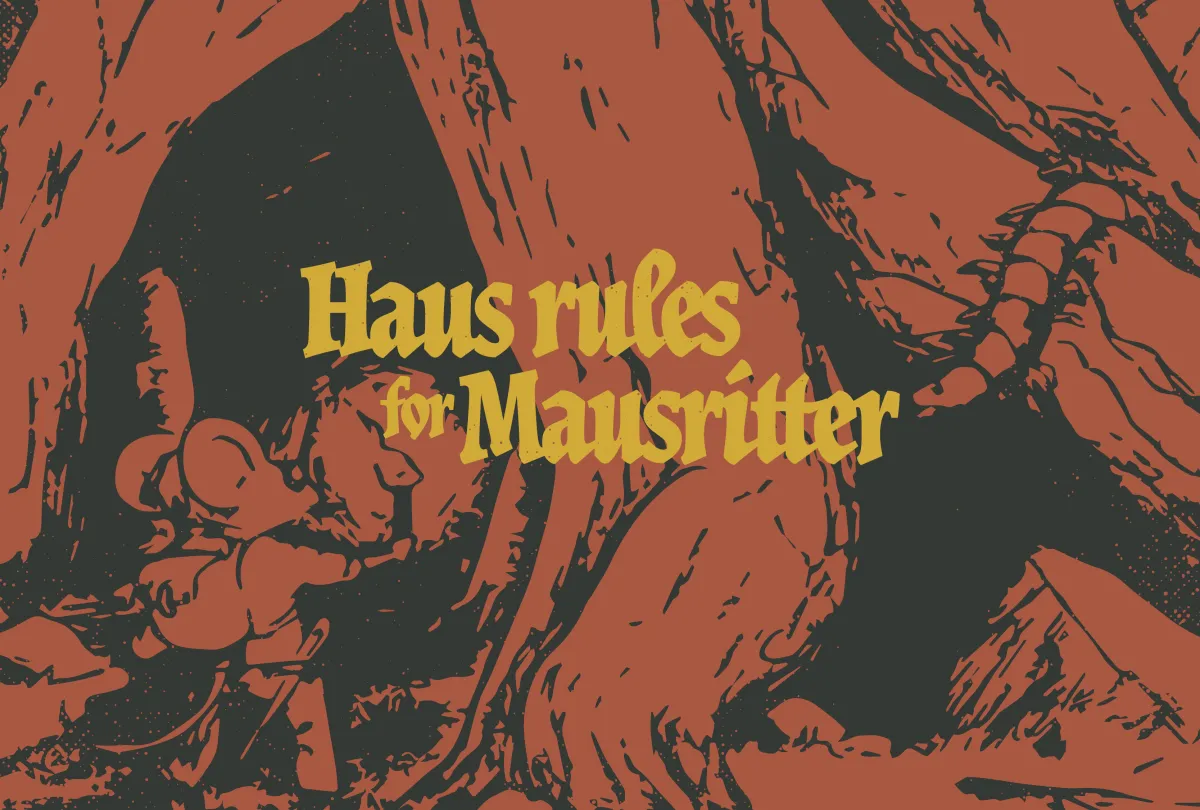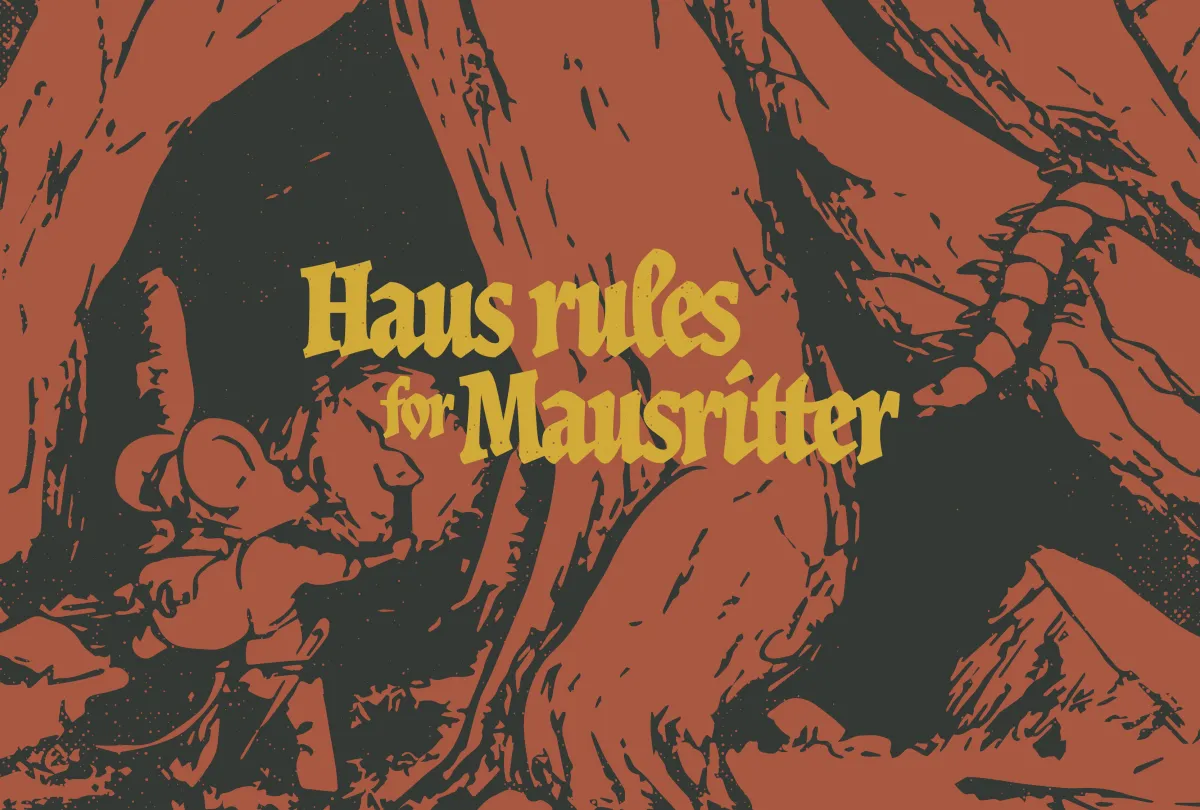SMOOSH JUICE
Haus Rules for Mausritter

My house rules and mouse-sized hacks for the sword-and-whiskers roleplaying game, Mausritter.

It’s a defining trait of mine, that if you tell me what’s happening in your campaign—I struggle to pay attention, but if you tell me the house rules you made for that campaign, suddenly I’m all ears. Feeling inspired by Sly Flourish’s article in the same vein, Shadowdark House Rules, I’ve decided to share mine for Mausritter.
House rules, or “homebrews” (I don’t distinguish between the two), are the humblest of hacks. They’re the proverbial mods on a car for joyriding with friends. Often honest, practical, and approachable, house rules usually reflect whatever’s going on at that particular homebrewer’s table. Sly’s rules are mostly tweaks to give his players more time in the sun before Shadowdark plunges them into darkness. He also—in good taste—keeps the torch rules and supercharges them with tiny tweaks that ensure they always go out when the players least expect.
My house rules for Mausritter are incredibly niche. Whatever itch I’ve got, the game’s core rules and 3rd party modules can’t seem to scratch it. So I’ve been in the garage, fine-tuning a Mausritter de-make that’s perfect for me. It even has a working title called Whisker Kings, which I teased in my end of the year article.
The cheese behind the rulings.
In my opinion, dramatic irony is what makes Mausritter special—their world is our world, but the mice don’t know that. To them, a pocket knife can be an ancient sword, a rusted car can be an alien temple, and mundane animals like catfish, crows, and cats are just as fearsome and formidable as any shark, sphynx, or dragon. Like the game says in its principles, it’s all about scale.
Mausritter’s world is mysterious and magical through its change in perspective.
I like to think my house rules double down on that core conceit while stripping out anything that gets in the way. For example, as fun as traditional fantasy elements are, I don’t think skeletons, spells, or castles belong anywhere near a Mausritter adventure. The core rules even have a magic system similar to something in Knave or Cairn. Now there’s nothing wrong with any of that, but for me that’s a trap that keeps us from getting the cheese. Fairies, magic, and monsters don’t make Mausritter a fantasy world—the mice do. Mausritter is more than a reskin. It’s high-concept, perspective-bending fantasy. If I can replace mice with regular humans and the adventure looks almost exactly like an Into the Odd adventures, to me, that’s a sign the best parts of Mausritter have gone un-nibbled.
Mausritter Setting Changes
My on-again off-again campaign of Mausritter has some changes I think heighten the innate magic of the setting. For the sake of this article, I’ll call them the laws of the Whisker Kings (the name of that campaign).
- The new world is salvaged from the old. The critters of Mausritter don’t build or make anything that can be salvaged or repurposed from something else. They might carve spears or knit clothes, but they don’t build castles and thatched houses in a world surrounded by trees, rocks, and abandoned wrecks.
- There is no magic except the unknown. The world cannot be explained. The trash humans left behind are relics to the mice. Even something as mundane as a brass button is impossible to recreate with their technology. Instead of magic tablets, our critters collect human artifacts: zippo lighters, fishing line, batteries, and more.
- The humans are gone. And they’ve been gone for awhile. There are no cars speeding down highways or cats lapping at bowls of milk—the world belongs to the animals now. For whatever reason, “the creators” picked up their things, lit fires in the bellies of their machines, and left the world behind. My players have no idea they’re playing in an evacuation zone. Or that the year is 1936.
Mouse-sized rule changes.
Obsidian tablets have been replaced by artifacts. They still do “magic” things, have usage rules, and require rituals to “charge” them, but they’re not magic. They’re human objects. Clumsier and more grounded than spells, but with purposes and methods so unfathomable they might as well be magic. Most know this trope best from science-fantasy. A battery that heats metal. A tuning fork that deafens all who hear it. Pomade that makes whiskers hydrophobic (creating a bubble of air around their heads). You get the idea.
The attributes are now body, heart, and mind. The original attributes are very Into the Odd (which I love), but for my table, strength and dexterity were narrative mismatches for the world’s themes. After all, how big and believable are the differences between the strongest and weakest mouse anyway? To a cat, a mouse trap, or a rock—its nothing. I’d rather the dice be tied to other narrative themes, which is why strength and dexterity become body, will becomes mind, and heart reflects empathy, intuition, and charisma. (My game has a lot of social encounters that need something to risk).
More items take up more space. I love the logistical challenges of Mausritter. I like it so much I give mice another row of inventory slots, just so I can fill them with weird shaped objects and tools. Half of the fun is imagining mice trying to roll a wheel of cheese out of a downcellar or schlep a dead chicken across a field.
Cat-sized rule changes.
Time is now reflected in three watches. I’m not a “strict time records should be kept” kind of GM. The sun and moon moves at the pace of narrative tension. When the players roll poorly, time’s arrow flies at them. This is a fairly large change because it has cascading consequences for items, rations, and adventure locations. I hand wave most of it, but it requires high-trust.
We don’t just play mice. This is a big change I’ve slowly introduced over multiple games. As the mice explore, they make friends, form alliances, and “unlock” new playable critters. The options when we last played were mouse, mole, rat, frog, toad, and—as a joke—hamster (they get one extra inventory slot in their cheeks).
The game is played in seasons. Spring, Summer, and Fall are the adventuring season. The mice usually fit one adventure into every season before Winter has them dashing back to their warren for shelter. I’ve not had enough time playtesting this newest rule—but the impact is huge. Locations change with the seasons. Players feel the time crunch. And the mice grow old.
Critters grow old and retire or die. The average lifespan of a field mouse is about two years. In Whisker Kings, they probably live a little longer because they know how to wield a sewing needle, but once the 3rd winter comes, the players have to start rolling. Does the mouse live to adventure another year? They might not. One of their friends might take their place, or one of their offspring, either way, someone has to go out there and find more food and loot—that damn cat Balthazar has tribute owed to them.
Critters are tied to their warren. They go on adventures for food, supplies, and treasure. Every winter, the food stores dwindle, factions demand tribute, and the world gets more dangerous. Players have to pick and choose their adventures from the rumors—some promise food like acorns and dried fish, others weapons and powerful artifacts, and some allies and improvements for the settlement.
Final thoughts
As you can tell, I’m already in the “Are you even playing Mausritter?” territory. The answer is yes, but in the same way a lot of us play the big tentpole games. This campaign is also the first where I really started to explore the 1 HP Dragon framework for combat—which is an experiment so complicated, I excised it from today’s article. That house rule quickly spiraled out of control, which I’ll get to expand on in later installments.
Until then, I’ll keep exploring.
Explorers Design is a production of Clayton Notestine. If you liked this article, please consider liking, sharing, and subscribing. Members who pay $5/month also get access to additional tools, templates, and inspiration.

